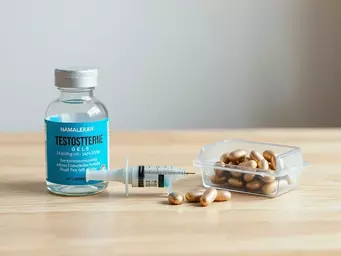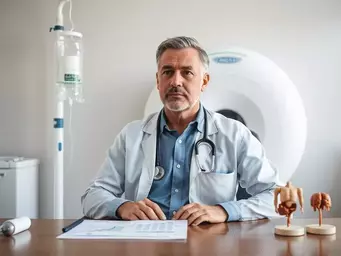Hypogonadism: Symptoms & Impact
- ✓ Fatigue & Low Energy
- ✓ Reduced Muscle Mass
- ✓ Low Libido & Dysfunction
- ✓ Depression & Mood Changes
How much do you really know about the role testosterone plays in your health? Understanding its impact can unlock valuable insights into your well-being and vitality. Let's explore the nuances of testosterone and how recognizing the signs of hypogonadism can lead to transformative changes in your life.
Understanding hypogonadism involves recognizing its various symptoms and the significant role exercise plays in managing testosterone levels.
When it comes to men's health, understanding hypogonadism and its effects is crucial. Hypogonadism is a condition where the body doesn't produce enough testosterone, leading to various health challenges. It can impact everything from energy levels to emotional well-being, and many men might not even realize they’re experiencing symptoms related to low testosterone. By educating ourselves on this topic, we take an essential step toward improving our vitality and overall health.
Some common symptoms of hypogonadism include fatigue, decreased motivation, and mood swings. Additionally, it can contribute to more serious health issues if left unaddressed. By recognizing these signs, you can take proactive steps towards regaining your health. Let’s delve deeper into what hypogonadism really means.
Hypogonadism is generally classified into two types: primary and secondary. Primary hypogonadism occurs due to testicular dysfunction, while secondary hypogonadism is a result of problems in the pituitary gland or hypothalamus. Both types can lead to low testosterone levels, which can significantly affect your quality of life. Understanding your own hormone levels is vital, as it opens the door to effective management strategies.
These symptoms can be more than just fleeting issues; they can lead to chronic health problems if not addressed. By focusing on education and understanding, we can work towards effective solutions.
Testosterone plays a crucial role in many aspects of men's health, impacting both physical and mental well-being. Physically, it influences muscle mass, bone density, and fat distribution, while mentally, it affects mood and cognitive function. Low testosterone can lead to increased body fat, decreased bone strength, and even cognitive decline over time.
Many men might be surprised to learn that testosterone levels can also affect emotional health. A drop in testosterone can lead to feelings of sadness or anxiety. It’s essential to recognize how intertwined our hormone levels are with our overall well-being. By understanding this connection, you can take steps to improve your health.
Testosterone is often referred to as the "muscle-building hormone" for a reason. It plays a pivotal role in muscle growth and development. When testosterone levels are optimal, men are likely to experience improved strength and muscle mass. Conversely, low levels can hinder muscle gains and overall fitness progress.
As an endocrinologist, I've seen firsthand how improving testosterone levels through lifestyle changes, including exercise, can lead to significant improvements in muscle mass and overall vitality. Remember, every step you take towards understanding and addressing your hormone balance is a step towards a healthier, more active life.
Due to the limitations in the search results, I couldn't find a specific YouTube video directly related to "Best Exercises to Boost Testosterone for Men with Hypogonadism." However, here is an embed code for a video that discusses boosting testosterone naturally, which might be relevant:
Have you ever wondered how your testosterone levels might be affecting your daily life? Share your thoughts and experiences below:
As an endocrinologist, I've seen firsthand the profound impact that consistent exercise can have on testosterone levels over time. Regular physical activity is not just a short-term fix; it’s a vital component of long-term health management, especially for those grappling with hypogonadism. By making exercise a routine part of your life, you can help stabilize and even boost your testosterone levels, which promotes overall well-being.
Monitoring changes in hormone levels after starting an exercise regimen is crucial. Not only does it help you understand how your body responds to different types of workouts, but it also enables you to tailor your fitness routine to get the best results. Let’s delve into how you can effectively track these changes.
Understanding how your testosterone levels fluctuate with different forms of exercise can provide valuable insight into your health journey. Here are some effective ways to monitor these changes:
By combining these methods, you can create a clearer picture of how exercise influences your hormone levels. This knowledge empowers you to make informed decisions about your fitness routine.
As your body adapts to your workout routine, it's essential to adjust your plan accordingly. This not only helps to continue stimulating testosterone production but also keeps your workouts fresh and engaging. For example, exploring new approaches to resistance training can significantly impact muscle growth and hormonal response. Here are some strategies for adapting your plan:
Adapting your workout plan not only enhances your physical performance but also plays a crucial role in maintaining balanced hormone levels. Remember, consistency is key!
Here is a quick recap of the important points discussed in the article:



 Have you been feeling unusually fatigued or experiencing a dip in your motivation? These could be si
Have you been feeling unusually fatigued or experiencing a dip in your motivation? These could be si
 What if the very treatments designed to save lives also impacted your quality of life in unexpected
What if the very treatments designed to save lives also impacted your quality of life in unexpected
 What if a simple hormonal imbalance is the reason behind your unexplained fatigue and weight gain? U
What if a simple hormonal imbalance is the reason behind your unexplained fatigue and weight gain? U
 Starting your journey with hormone replacement therapy (HRT) can feel overwhelming. Have you conside
Starting your journey with hormone replacement therapy (HRT) can feel overwhelming. Have you conside